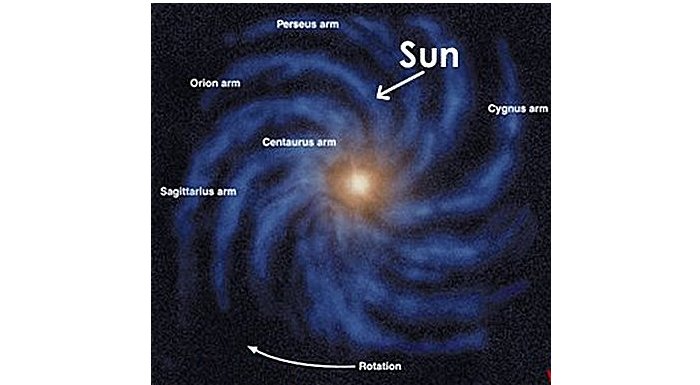Voynich Manuscript: Ancient Book Nobody Is Able To Read
AncientPages.com - The nature and origin of the manuscript have long remained a mystery. Few ancioent manuscripts have caused as much controversy and debate as the mysterious Voynich manuscript. Is it a hoax or a genuine book? It seems the verdict is still out on this puzzling manuscript.
This ancient medieval text is a cryptic document written by an unknown author.
Plenty of skilled cryptographers have studied the document and many attempts have been made to crack the code. Many experts have said it is impossible to decipher the medieval text, but maybe the term “impossible” is over-used by us humans?
Over the years, the Voynich manuscript has caused a lot of controversy and debate. This ancient medieval text is a cryptic document written by an unknown author.
Many skilled cryptographers have studied the document. Their attempts to break the code failed. Up to now, none of them has been able to crack the code.
It is worth mentioning that at the end of WWII the U.S. military passed some spare time encrypting ancient texts. They managed to decipher every text except the Voynich manuscript, which is written with an unknown script system.
Does the Voynich manuscript really contain a message? Are we unable to break the mysterious code? Is the book a deliberate hoax? Is it an encoded version of a known language or a totally invented language?
A new study suggests that the manuscript holds a genuine message.
Researchers say that while the text written on medieval parchment shows basic statistical patterns that bear resemblance to those from real languages, there are features that make the manuscript a hoax. The manuscript was named after Wilfrid M. Voynich, a Polish-American book dealer who found this manuscript in a chest in the Jesuit College at the Villa Mondragone, in Frascati in 1912.
He bought it from the Jesuits, and gave photographic copies to a number of experts to have it deciphered. None of them succeeded. Certain features in the illustrations, such as hairstyles for example, suggested that the book was produced between 1470 and 1500.
But by whom and why?
Inside the manuscript, which is 240 pages long, there was a 17th century letter, written by Johannes Marcus Marci of Cronland, a Bohemian doctor and scientist, rector of the University of Prague, and official physician to the Holy Roman Emperors.
The paper dated 1666, was addressed to Athanasius Kircher, a 17th-century German Jesuit scholar and informed that the manuscript was bought by Emperor Rudolph II in 1586.
During the 1600s, some scholars attempted to decipher the script. Then the mysterious manuscript disappeared for 250 years before Voynich discovered it.
Voynich was also eager to learn more about his new remarkable finding, but establishing the origin of the book and deciphering the code, was a much more complex task than he anticipated.
According to a theoretical physicist, Dr Marcelo Montemurro from the University of Manchester, UK, the "manuscript presents a complex organization in the distribution of words that is compatible with those found in real language sequences.
"We are also able to extract some of the most significant semantic word-networks in the text. These results together with some previously known statistical features of the Voynich manuscript, give support to the presence of a genuine message inside the book."
Dr Montemurro and his team used a computerised statistical method to analyse the text and focused on patterns of how the words were arranged in order to extract meaningful content-bearing words.
"There is substantial evidence that content-bearing words tend to occur in a clustered pattern, where they are required as part of the specific information being written," he explains.
"Over long spans of texts, words leave a statistical signature about their use. When the topic shifts, other words are needed. The semantic networks we obtained clearly show that related words tend to share structure similarities. This also happens to a certain degree in real languages."
Dr Montemurro argues that the hoax hypothesis cannot possibly explain the semantic patterns he has discovered. He believes it unlikely that these features were simply "incorporated" into the text to make a hoax more realistic, as most of the required academic knowledge of these structures did not exist at the time the Voynich manuscript was created.
"While the mystery of origins and meaning of the text still remain to be solved, the accumulated evidence about organization at different levels, limits severely the scope of the hoax hypothesis and suggests the presence of a genuine linguistic structure," scientists say in their paper.
Those who believe in the authenticity of the Voynich manuscript maintain that the script is far too complex to be a hoax. Skeptics on the other hand, suggest that the failure of the code breaking indicates there might be no code to decipher and no hidden message.
There is also a possibility that the manuscript is not a code, but rather an unidentified language and of course, as usual it is very convenient to dismiss certain uncomfortable findings as hoaxes simply because we do not understand their origin and meaning.
Copyright © AncientPages.com All rights reserved. This material may not be published, broadcast, rewritten or redistributed in whole or part without the express written permission of AncientPages.com
Expand for referencesReferences:
More From Ancient Pages
-
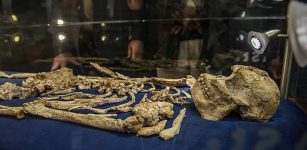 ‘Little Foot’ Is An Entirely New Species Of Early Human – Researchers Say
Archaeology | Jan 3, 2019
‘Little Foot’ Is An Entirely New Species Of Early Human – Researchers Say
Archaeology | Jan 3, 2019 -
 DNA Study Sheds Light On The Mysterious Picts Of Scotland
DNA | Jul 7, 2023
DNA Study Sheds Light On The Mysterious Picts Of Scotland
DNA | Jul 7, 2023 -
 Submerged Roman Villa Discovered On The Coast Of Cerveteri, Italy
Archaeology | Jun 6, 2024
Submerged Roman Villa Discovered On The Coast Of Cerveteri, Italy
Archaeology | Jun 6, 2024 -
 Ancient Village Of Zalipie Where Flowers Are Painted On All Houses
Ancient Traditions And Customs | May 29, 2019
Ancient Village Of Zalipie Where Flowers Are Painted On All Houses
Ancient Traditions And Customs | May 29, 2019 -
 Surprising DNA Study Links Present-Day Native American Tribe To Ancestors In San Francisco Bay Area
Archaeology | Mar 22, 2022
Surprising DNA Study Links Present-Day Native American Tribe To Ancestors In San Francisco Bay Area
Archaeology | Mar 22, 2022 -
 You Can Visit The Tomb Of Jesus – 3D Virtual Tour Opens Soon
Archaeology | Nov 10, 2017
You Can Visit The Tomb Of Jesus – 3D Virtual Tour Opens Soon
Archaeology | Nov 10, 2017 -
 Legendary Epic Of King Gesar Who Descended From Heaven And The Ancient Tarna Monastery
Featured Stories | Nov 20, 2021
Legendary Epic Of King Gesar Who Descended From Heaven And The Ancient Tarna Monastery
Featured Stories | Nov 20, 2021 -
 Peaches Spread Across North America Through The Resourceful Networks Of Indigenous Communities
Archaeology | Nov 25, 2024
Peaches Spread Across North America Through The Resourceful Networks Of Indigenous Communities
Archaeology | Nov 25, 2024 -
 Norse Religion Was Different Than Previously Thought – New Study Reveals
Archaeology | Feb 27, 2021
Norse Religion Was Different Than Previously Thought – New Study Reveals
Archaeology | Feb 27, 2021 -
 Robert The Bruce: Mighty King Of Scots And Great Scottish Hero
Featured Stories | Oct 13, 2016
Robert The Bruce: Mighty King Of Scots And Great Scottish Hero
Featured Stories | Oct 13, 2016 -
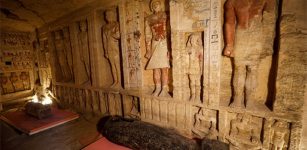 Collection Of 59 Well-Preserved 26th Dynasty Coffins Unearthed In Saqqara Necropolis, Egypt
Archaeology | Oct 4, 2020
Collection Of 59 Well-Preserved 26th Dynasty Coffins Unearthed In Saqqara Necropolis, Egypt
Archaeology | Oct 4, 2020 -
 Crannogs – Artificial Islands In Scotland Are Older Than Stonehenge
Archaeology | Jun 17, 2019
Crannogs – Artificial Islands In Scotland Are Older Than Stonehenge
Archaeology | Jun 17, 2019 -
 Tiger Cave: Rock-Cut Hindu Temple Complex Dated To East India’s Pallava Empire
Featured Stories | Jan 19, 2017
Tiger Cave: Rock-Cut Hindu Temple Complex Dated To East India’s Pallava Empire
Featured Stories | Jan 19, 2017 -
 LIDAR Discovers 18-Kilometer (11-Mile) Maya Road In The Yucatan Jungle
Archaeology | Dec 5, 2023
LIDAR Discovers 18-Kilometer (11-Mile) Maya Road In The Yucatan Jungle
Archaeology | Dec 5, 2023 -
 5,000-Year-Old DNA Could Solve The Mystery Of Genetic Changes In Europe
Archaeology | Mar 8, 2022
5,000-Year-Old DNA Could Solve The Mystery Of Genetic Changes In Europe
Archaeology | Mar 8, 2022 -
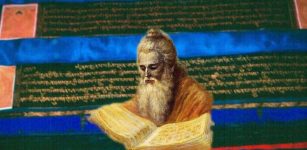 2,500-Year-Old Tibetan Medical Text Describes A Coronavirus-Like Outbreak In Surprisingly Accurate Details
News | Oct 26, 2020
2,500-Year-Old Tibetan Medical Text Describes A Coronavirus-Like Outbreak In Surprisingly Accurate Details
News | Oct 26, 2020 -
 Spicy History Of Chili Peppers – Study From University Of Alabama
Archaeology | Nov 20, 2024
Spicy History Of Chili Peppers – Study From University Of Alabama
Archaeology | Nov 20, 2024 -
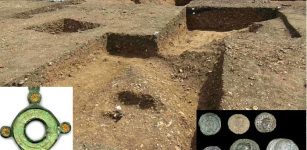 Incredible Ancient Roman ‘Service Station’ With Hundreds Of Artifacts And Dozens Bodies Found In Hertfordshire, UK
Archaeology | May 12, 2022
Incredible Ancient Roman ‘Service Station’ With Hundreds Of Artifacts And Dozens Bodies Found In Hertfordshire, UK
Archaeology | May 12, 2022 -
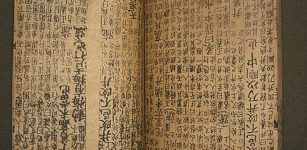 I Ching – The Book of Changes – World’s Oldest Book Of Wisdom Used To Predict Future Events
Featured Stories | Sep 12, 2018
I Ching – The Book of Changes – World’s Oldest Book Of Wisdom Used To Predict Future Events
Featured Stories | Sep 12, 2018 -
 Norse Frost Giant Vafthrudnir Who Was A Mastermind Of Riddles
Featured Stories | Mar 24, 2025
Norse Frost Giant Vafthrudnir Who Was A Mastermind Of Riddles
Featured Stories | Mar 24, 2025



